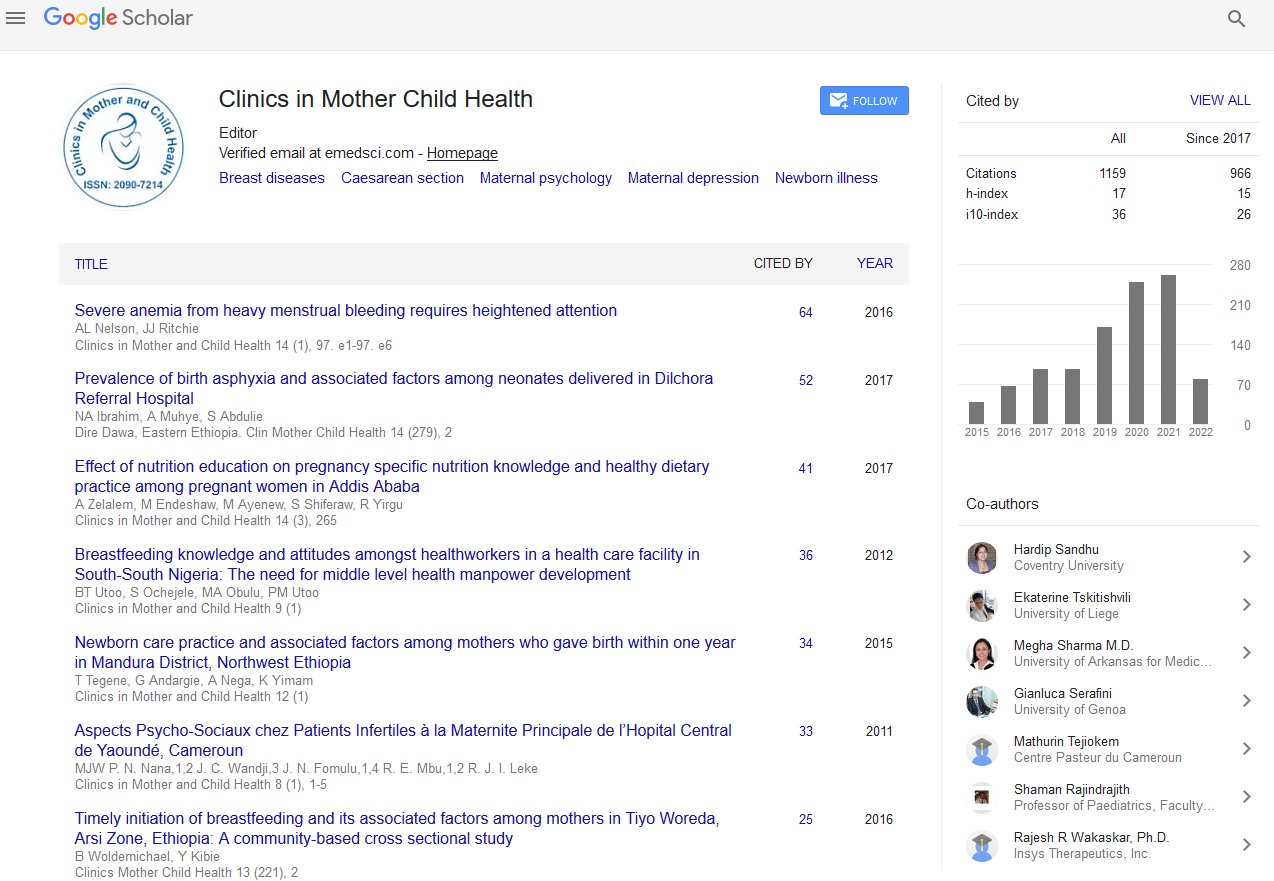Indexed In
- Genamics JournalSeek
- RefSeek
- Hamdard University
- EBSCO A-Z
- Publons
- Geneva Foundation for Medical Education and Research
- Euro Pub
- Google Scholar
Useful Links
Share This Page
Journal Flyer

Open Access Journals
- Agri and Aquaculture
- Biochemistry
- Bioinformatics & Systems Biology
- Business & Management
- Chemistry
- Clinical Sciences
- Engineering
- Food & Nutrition
- General Science
- Genetics & Molecular Biology
- Immunology & Microbiology
- Medical Sciences
- Neuroscience & Psychology
- Nursing & Health Care
- Pharmaceutical Sciences
Abstract
The Reliability of Sickling and Solubility Tests and Peripheral Blood Film Method for Sickle Cell Disease Screening at District Health Centers in Uganda
A. L. Okwi,W. Byarugaba, A. Parkes, and M. Ocaido
Although sickling and solubility tests and peripheral blood film methods are today available for sickle cell disease screening in Uganda, their reliability and ease of applicability have not been determined. This study was therefore carried out to determine the reliability of sickling and solubility tests and peripheral blood film method for screening for SCD in Uganda. This was descriptive laboratory based study which was carried out at Makerere University College of Health Sciences. The 200 samples from children aged between 6 months and five years were independently analyzed using sickling and solubility tests and peripheral blood film method. Hemoglobin electrophoresis cellulose acetate was used as the gold standard. Sickling and solubility tests had sensitivities of 65.0% and 45.0%, respectively and peripheral film had 35.0%. Sickling, solubility and peripheral film had specificities of 95.6%, 90.0% and 96.7%, respectively. Sickling had diagnostic accuracy of 92.5%, solubility (85.5%) and peripheral film (90.5%). Sickling had a Cohen’s Kappa of 0.6, solubility 0.3 and peripheral film 0.4. Sickling test had turn around time (TAT) of 38 minutes, solubility 70 minutes and peripheral 44 minutes. In conclusion, the sickling test was more reliable and easier to perform than solubility test and peripheral blood film method. It would therefore be a recommended test for preliminary screening of children for SCD at district health centers IV and confirming only positives using hemoglobin electrophoresis.


